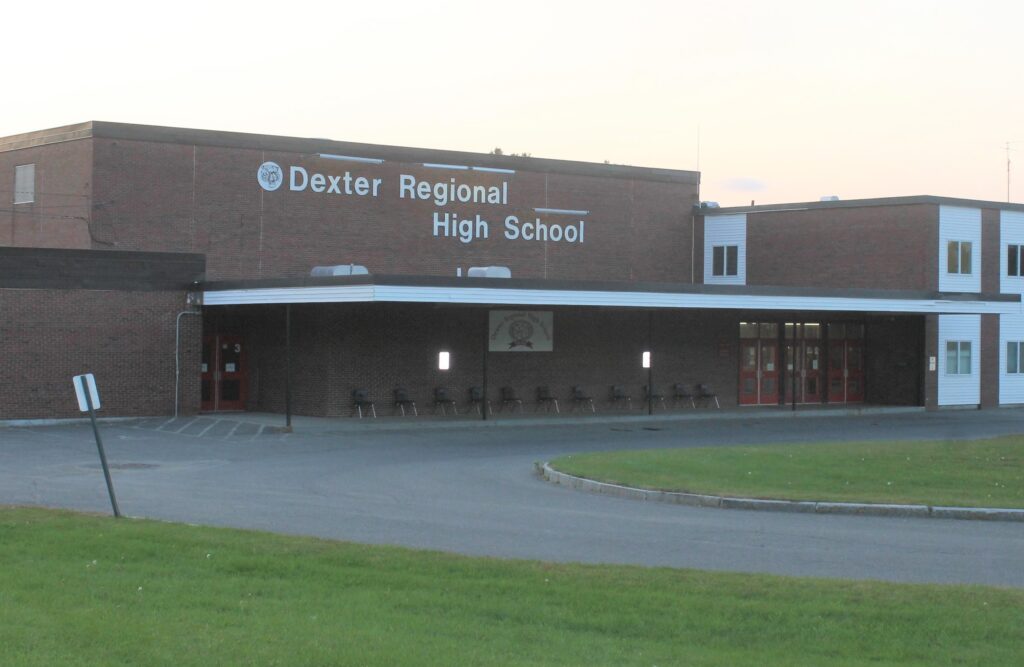
Local application submitted for regional comprehensive high school
DEXTER — Two area school districts and the region’s career and technical education center have applied for state funding for a comprehensive high school that will combine traditional academics, career and technical education, and access to college courses.
The first application in a two-part process for a new facility was turned in last month, the superintendent of Dexter-based SAD 46 Kevin Jordan said. The second part is due in October 2026.
The proposal includes closing the existing Dexter Regional High School, Piscataquis Community High School and technical center and consolidate them into a regional campus to serve 28 communities. Other neighboring school districts, such as those in Dover-Foxcroft, Greenville and Milo, would still be able to send students for career and technical programs under an arrangement similar to what is currently in place at the Tri-County Technical Center.
It comes nearly a decade since SAD 46 stewarded an application between itself and SAD 4 for a $100 million first-of-its-kind secondary institution integrated with a career and technical school, the University of Maine System and the Maine Community College System that would support industry training programs. Interest grew to also include Milo-based SAD 41 in a non-binding agreement, as well as Corinth-based RSU 64.

DEXTER REGIONAL HIGH SCHOOL — SAD 46, SAD 4 and TCTC have submitted an application to the state seeking funding for a fully integrated grade 9-16 comprehensive high school which would combine traditional academics, career and technical education and college courses.
Projects based in the Madawaska and Houlton areas initially ranked higher than that proposal, but those schools did not progress as residents could not agree on where to put the building.
The Milo and Corinth districts stopped pursuing the regional comprehensive high school with Dexter and Guilford late last year. The SAD 41 School Board voted against putting approximately $133,300 of district funds toward startup costs and a site analysis for the pursuit of the school to discontinue its participation.
“The big issue with our project is we were at the stage where we were going to have to spend $800,000 for site work, engineering, analysis and all of that,” Jordan said.
The Maine Department of Education was hesitant to provide that funding after previously doing so for one of the Aroostook County projects that did not come to fruition.
Instead, half of the $800,000 was to be funded by the state with SAD 4, SAD 41 and SAD 46 covering the rest but “all of the school districts involved weren’t willing to take that risk on,” Jordan said.
Still believing in the concept of a regional comprehensive high school, Jordan said the application process was tweaked by the Maine Department of Education to drop the requirement from three to two high schools, along with a career and technical education center.
Committees from SAD 46 and SAD 4 quickly decided to reapply with a modified application, Jordan said.
“School districts are having a hard time passing budgets now, our facilities aren’t getting any younger, so it really kind of hit the boiling point and struck a nerve with both committees to say ‘let’s go, we have got to make this happen,’” Jordan said.
The neighboring districts have shared services over the years, including PCHS baseball players being part of the Dexter team last spring and this winter Pirate girls are part of the basketball squad in Dexter.
“We still believe firmly in the concept of this new school,” Jordan said. “This is continuing to move on between the two districts.”
Foxcroft Academy recently reached out to officials in SAD 4 to propose the community send its students in grades 9-12 to the academy. SAD 4 Superintendent Kelly MacFadyen called Jordan to say the district is still on board with the comprehensive high school application.
“This is more than just combining the high schools, it pulls together higher education, Maine community colleges, University of Maine System, and several industry partners and local businesses that are going to be embedded into the structure of the system itself,” SAD 46 Director of Curriculum, Instruction and Assessment Matt Drewette-Card said.
The high school would operate on a “Explore-Focus-Mastery” framework.
Grades 9-10 would be an exploratory stage as all students would gain foundational exposure to diverse career pathways, including health care, advanced manufacturing, information technology, renewable energy and financial services, modeled after a liberal arts college approach.
In grades 11-12, students would be in a focus stage as they dive deeper into chosen pathways by earning industry certifications and preparing for both college and careers through partnerships with local businesses and higher education institutions.
Post graduation is the mastery stage. For the first time, students and community members would have local access to higher education courses, eliminating the barrier of no college options being nearby.
School officials do not know how much funding would be available from the Maine Department of Education.
This year 90-plus new school applications were submitted to the state and determining how many of these are funded could determine what is available for a regional comprehensive high school. The Maine Department of Education has not said how many comprehensive high school applications were received.
If the project is approved the projected timeline would span six or seven years. That includes foundational development, then detailed designs and local referendums, followed by construction and staff preparation for the school opening.
“So that means eight to 10 years before moving in you have to start planning this all,” Jordan said.
The site of a future school depends on several factors, including availability of town water and sewer and traffic studies done by the Maine Department of Transportation. A possible site for the Ridge View Community School on Route 7 near the Corinna town line nearly two decades ago was rejected due to safety concerns with the nearby 45/55 mph speed zones.
“Moving forward your success depends on whether you have a site that everybody can be happy with,” Jordan said. “One of the things we have said is the new school would not be in downtown Dexter and it would not be in downtown Guilford.”
New school colors, nickname and mascot are all to be determined.
“We have proposed the exact same number of board members from SAD 4 and SAD 46 to be a part of the new governance structure,” Jordan said, which would mean four directors from each board overseeing the high school instead of basing it on populations.
Typically boards have an odd number of members to avoid ties.
“We went into trying to make this absolutely equal across the board,” he said. “This is two school districts making the same concessions for something bigger and better for the students down the road.”
The high school directors would have a co-chair structure for the first few years, and then the chair would alternate between someone from SAD 4 and SAD 46.
“We are really trying to take away any perception that one district is getting a better deal than the other, we are 100% equal,” Jordan said.
The SAD 4 and 46 boards would still oversee pre-K to grade 8 education in their respective districts.
The comprehensive high school would provide an economic benefit to the region as residents would no longer have to travel to Bangor or Augusta for post-secondary training and high schoolers would have internship opportunities.
Area businesses, the university and community college systems have written letters of support and Cianbro, Northern Light Mayo Hospital and Darling’s Auto Group are all interested in working with the school.
Traditional academics and career and technical education will be geared toward emerging markets, Drewette-Card said.
“One of the things that we have done with this particular application is looking at Department of Labor data and other economic data to see what are those emerging high impact, high wage labor markets in Maine between now and 2030,” he said.
“We have created a structure here and a process to review constantly what we are doing, how it’s effective and how [students] are impacting the world outside once they leave here. Then how is the world changing, what is the job market and the emerging job market and what do we need to do to prepare our kids?”
SAD 46 officials hear from businesses that they cannot find enough qualified employees, Jordan said.
“We are hoping we can really impact the local market and when I say local, state of Maine,” he said.